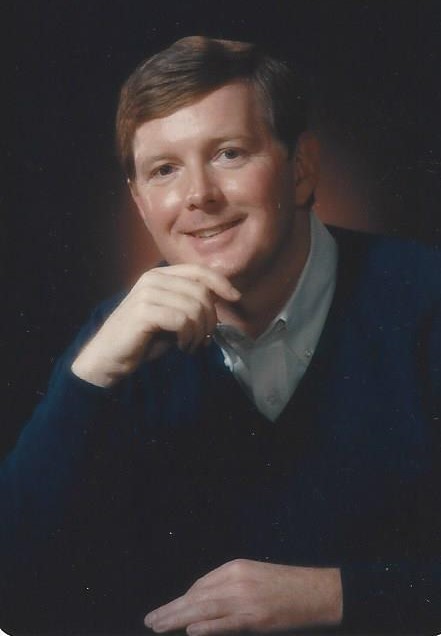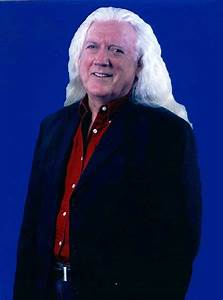
The Coliseum Model of
Multiple Family Group Therapy
©1994 By Lewis N. Foster

It's like you own your own chair;
It's like you own your own space;
And what you do with your life,
Is what you do with your chair.
The Coliseum Model is better experienced than discussed which is true for MFGT generally. Tom and Marybeth have observed the impenetrable barriers encountered by experienced therapists and have said, "the magic of one family helping another is that a family can 'crossover' those barriers with ease because of mutual trust that the helping professional is not often afforded. The crossover effect is the same one that parents experience when their teenagers stay overnight with another family. The teenagers, though often in trouble with their own family members, always receive rave reviews from the other family who they are visiting."
"This cross pollination experienced through social networking is the core of all multiple families group. Just as families formed a community through helping each other long before 'therapy' existed, the multiple families group model becomes a surrogate community which serves the same purpose."
"As chairs represent protective barriers, themselves, participants are instructed to ........bring pillows and dress comfortable." Much can be learned before a group even commences about how family members form a "sculpture" of a community before ever starting to work. When a comfortable, carpeted area is not available, chairs are stacked by the entrance door. When families arrive to commence group, each person becomes responsible for his or her own chair and where they sit in the room. "Otherwise" according to Tom, "too much of group process is left up to the janitor," (Basic Assumption #1).
"The coliseum action is always in the center ring, just like real life, (Basic Assumption #2). The locus of responsibility is the only issue ever being negotiated. Those families with courage, who know what issues they have come to work, will move to the center. They will define the work which they wish to accomplish and invite other families, with whom they have already begun to bond, into the center to work with them. Individuals can work with their own family or a surrogate family that they create from participants of the group," (Basic Assumption #3).
"The remaining families will observe from the next outer ring out until they decide to enter the center ring, themselves."
To talk participants have to move to the center where the action is taking place. In this way they take responsibility and begin the process of 'learning by doing,' (Basic Assumption #4). When a participant speaks from the outer ring he/she is invited to come to the center with their chair if they forget.
The therapists (there are always two, male and female, like the Ark) become consultants, remaining off the playing field like all good coaches (Basic Assumption #5). while the family becomes the therapist to other families (Basic Assumption #6). There is no "patient" in which the family can scapegoat (Basic Assumption #7), and there is a de-investment in the "curing caretaker," (Basic Assumption #8). Role play has been exchanged for real play.
A Personal Experience with the
Coliseum Model of
Multiple Families Group Therapy
There were no chairs in the large conference room in which I had arrived with my family to attend training on the Coliseum Model of Multiple Family Group Therapy. Standing in the doorway, my eyes scanned the room moving past one person sitting about mid-room, and I noticed stacked to my left a large number of chairs. I knew the janitor didn't forget to setup the room, because, the hotel staff was directed to stack the chairs to the left of the doorway. Anxiety continued to generate in response to fantasies about what the day would produce.
Conference participants filed into the room taking ques from others and placing their chairs in the vicinity of everyone else. Tom Saunders and his wife and son arrived shortly after Marybeth Weigand entered the room. Tom's wife quickly set up the video camera while Tom and Marybeth took chairs across from each other. Tom introduced himself and began telling the story about the ordeal he had experienced on the way to the Coliseum Model training this morning.
My thirteen year old stepson Brandon A. Anderson was invited by Tom's wife Laura-Leigh to operate the video camera and my three year old son Michael sat in my lap and freely moved about the room with his stuffed Dalmatian dog. Tom's one year old son made himself at home singing "da da, da da, da da" and occasionally sitting in Tom's lap. I was experiencing a flood of internal and external stimuli and my thoughts were not on the Canary being talked about by Tom and Marybeth. I do no know to this day what that was about.
At that point, Michael began throwing his Dalmatian up into the air near Marybeth and it almost landed on a participant. He was being very disruptive. Getting control of Michael became a priority, but, I could not make a decision about how to do that. Surrounded by professional therapists the father in me was intimidated.
What if I make a mistake and someone doesn't agree with how I deal with my son? What will they think if I'm to controlling or not controlling enough? What do they think about my bringing Michael to this training today? What are the rules around bringing your family to this training? I don't know if I'm ready for this.
Oxygen slowly filled my lungs and I released it allowing the tension to escape as well. "Lewis," I said to myself, "you are Michael's father! These people are strangers! Michael is dependent on you! It doesn't matter what your peers think when you parent your son. Put them aside and let the father in you take care of your son. Set yourself free from your fantasies about what you think they may think about you. That is not healthy for Michael or you."
"Tanya is here somewhere, why doesn't she take care of Michael. Doesn't she know that I'm the co-producer of this International Conference on Multiple Family Group Therapy? What are these professionals going to think? They will never come to another training that the Resource Center sponsors."
Oxygen slowly filled my lungs and I released it allowing the tension to escape as well. A strong, calm, parenting voice said, "Michael, you need to stop throwing the dog." Michael threw the dog again and I stood and began walking in the direction of Michael. Michael said, "I don't want to!," and he hugged the dog against his chest. "If you throw the dog again I'm going to take it." I stepped backwards a few steps and sat in my chair while looking Michael in the eye. He didn't throw the dog again.
I turned to oxygen once again, trying this time to enter some kind of calm, hypnotic trance. "Yes!, he didn't throw the dog again." Marybeth and Tom continued to talk about something and I began to pat myself on the back for setting myself free from fears of not being good enough. Michael stopped throwing the dog and I became a better father. My parenting pace was set for the remainder of the day.
"Jesus said, when cornered by crafty lawyers, ...be with the children, watch the children, see what the children are doing, because, that is how you get where you are going. Watch the kids and see how they handle their lives, because they are the only people in this room that are going to enjoy the entire day."
This statement, made by Tom, played over and over in my head. That is why Marybeth and Tom say if you don't have a kid, rent one, to take with you into the Multiple Family Therapy Group. Tom continued to talk, "The children are going to spend their time today totally selfish. They're going to do what feels good, be with whom they want to be with, play with what they want to play with, and when they get too rowdy, we're going to 'shush' them and teach them how to be adults. The only thing that keeps us from being real is training. It has taken me years to get over my training."
Thanks Tom, I thought to myself. What am I suppose to think about my stopping Michael from throwing his dog just a few minutes ago? Oxygen slowly filled my lungs and I released it allowing the tension to escape as well. As I returned my attention to the group, Marybeth was talking.
"The children are not going to worry about whether they look foolish, act silly, or say something wrong -- all those things with which we adults, and especially professionals, concern ourselves. Watch the children in the Multiple Families Therapy Group because they are going to take car of themselves very well."
"The kids haven't yet learned how to lie, to cover up a feeling. They know in a heart beat whether or not they are anxious or calm. They will be able to tell you, in their way, what is the truth in the room. The pre-verbal children will cry, get fussy, act up and be inconsolable. The verbal children will tell family secrets, providing access to the family problems, that may not have come out in a formal assessment or may not come out at all."
"Six year old children (and under) don't know any better and people over eighty usually don't give a damn," Tom proclaimed.
Brandon operated the camera focusing on the action in the room through the lens of an adolescent. There were no breaks. Participants took care of themselves and took breaks as needed. Tom asked that people note what they were feeling and thinking when they made the decision to take a break.
During one extremely intense moment, when the center of the group spoke in hushed whispers, the camera came off the tripod, and Brandon moved around the room, into the most intimate crevices of shared secrets. Asked later didn't the camera really bother her, the participant said she was never aware of its presence.
One participant volunteered to find her family among the people attending the conference, rather than create a role-play, and the amount of intensity in the center increased significantly. Participants played themselves and the roles they lived in their families. It was real life--not role life--in the center. The camera, right in their face, made no difference!
What they shared and growth that took place will remain private. The intimacy in the center was different from the outer rings of the group.
Michael found new laps to sit on and shared his Dalmatian with many participants. He left the group having enjoyed himself, and he probably had all his needs met. When I became bored, I watched the children. The children taught me about who I was, and who I want to become.
Having the children in the group seemed to stimulate warmth with emotionally distant or preoccupied participants, and it promoted group cohesion.
When you have the opportunity to attend training like this --especially with your family-- just do it. Personally and professionally, you'll be glad you did!
www.ThomasMinorSaunders.com